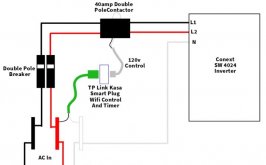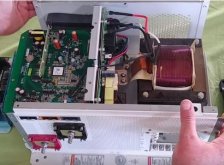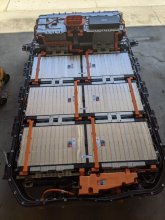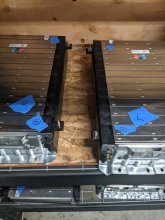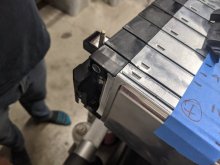400bird
Solar Wizard
Alright, so I did another off-grid test yesterday morning when the cells were low enough (3.6v) and PV was producing around 2000 watts.
I set the max charge current lower than normal to test the frequency shifting.
The Solar Edge inverter came back to life after the 5 minute time out, no prob.
The XW totally ignored the max charge current limit I had set and as the sun continued to raise in the sky, the battery was charging at roughly 8 amps over my max charge current with no signs of frequency shift. I had a DVOM hooked up. The frequency was moving from 59.99 to 60.00
I guess I will have to wait for the big battery to test the frequency shifting ability of the XW.
Good news on the low voltage cut off hysteresis.
I lowered recharge voltage to 49.8, left grid support at 50.5
They XW acted as I had hoped. As the battery hit 50.5 volts the current slowly decreased to hold the battery at 50.5 volts. Once it cycled off it never came back on.
I set the max charge current lower than normal to test the frequency shifting.
The Solar Edge inverter came back to life after the 5 minute time out, no prob.
The XW totally ignored the max charge current limit I had set and as the sun continued to raise in the sky, the battery was charging at roughly 8 amps over my max charge current with no signs of frequency shift. I had a DVOM hooked up. The frequency was moving from 59.99 to 60.00
I guess I will have to wait for the big battery to test the frequency shifting ability of the XW.
Good news on the low voltage cut off hysteresis.
I lowered recharge voltage to 49.8, left grid support at 50.5
They XW acted as I had hoped. As the battery hit 50.5 volts the current slowly decreased to hold the battery at 50.5 volts. Once it cycled off it never came back on.



